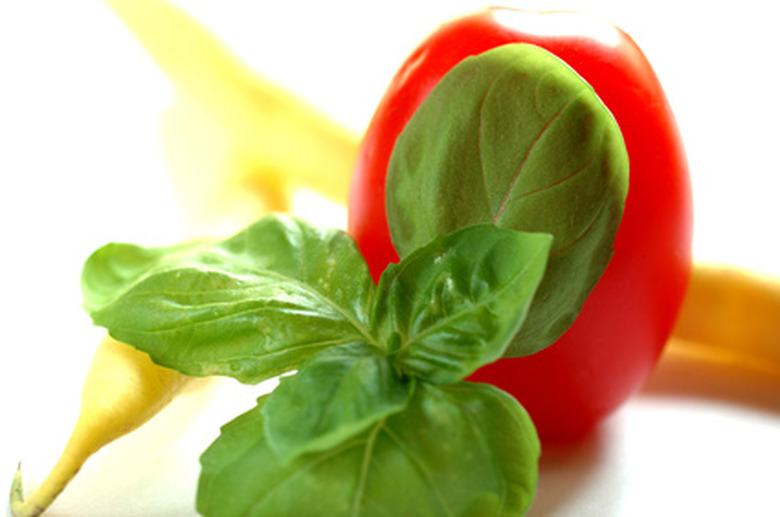What Are The Benefits Of Planting Basil In With Tomato Plants?
Growing two different kinds of plants together that benefit each other is called companion planting. This type of planting is often used in organic gardening as a chemical-free way to control pests and disease. Companion planting may be used to repel insects or to attract beneficial bugs. There are often other benefits to companion planting–it can have a real impact on the growth and health of your plants. Tomato plants and basil are just some of the plants that have been routinely grown together, showing some definite benefits to each other. Plant three basil plants for every one tomato plant for the most benefits.
Pest Control
The strong scent of basil repels many garden pests including mites, aphids and flies. This benefit provides protection for your tomatoes, allowing them to be unaffected by damage from pests.
- Growing two different kinds of plants together that benefit each other is called companion planting.
Attracting Bees
Tomato plants need to be pollinated. The strong scent of basil attracts bees and in turn brings bees to the tomato plants for pollination.
Flavor Enhancement
When tomatoes are planted near basil, they take on the flavor of basil. These tomatoes will have a tomato taste with a basil undertone. Basil is a complementary flavor to tomatoes, as they are commonly used in recipes together.
Similar Growth Requirements
Basil and tomatoes have similar growth requirements. Tomatoes and basil both require plenty of sunlight, water and higher outdoor temperatures. Planting them together makes the most of your garden space.
- Tomato plants need to be pollinated.
- The strong scent of basil attracts bees and in turn brings bees to the tomato plants for pollination.
Benefits Of Pruning Tomato Plants?
Properly pruning your tomato plants improves their form and eliminates conditions that can promote the growth of fungal and bacterial disease. Unsupported branching vines are quickly weighed down and come in contact with the ground. Limiting your tomato plants to two or three stems thins out the leaves of the plant, ensuring that all of the leaves have ample access to sunlight. Shaded leaves can yellow and drop from the plant, causing it to expend nutrients regrowing leaves instead of producing fruit. This type of tomato plant grows continually throughout the year and requires regular pruning to prevent it from developing a broad branching growth habit that restricts the size of its fruit and promotes disease. The best time to prune side shoots is when they are roughly 4 inches long.
